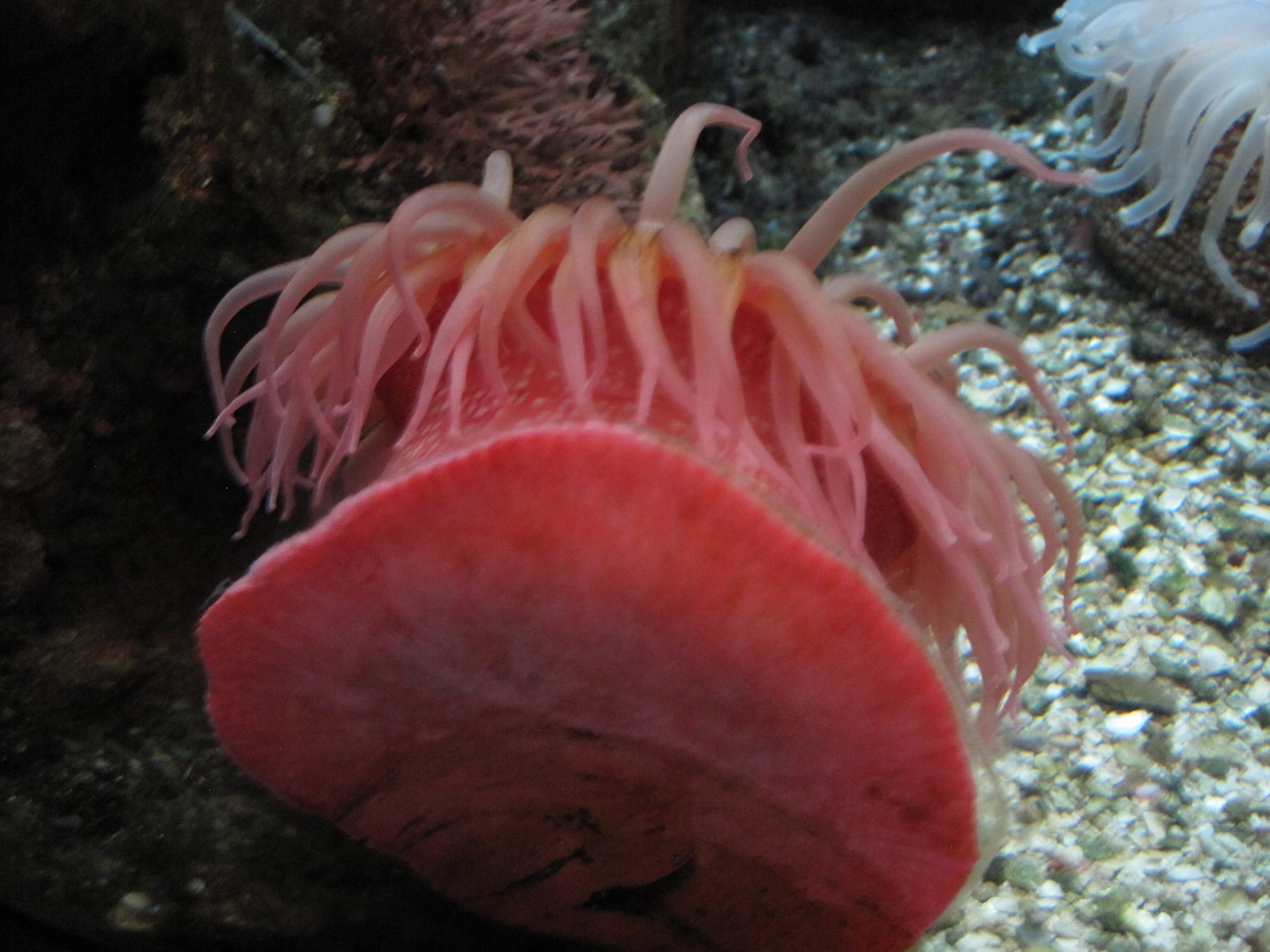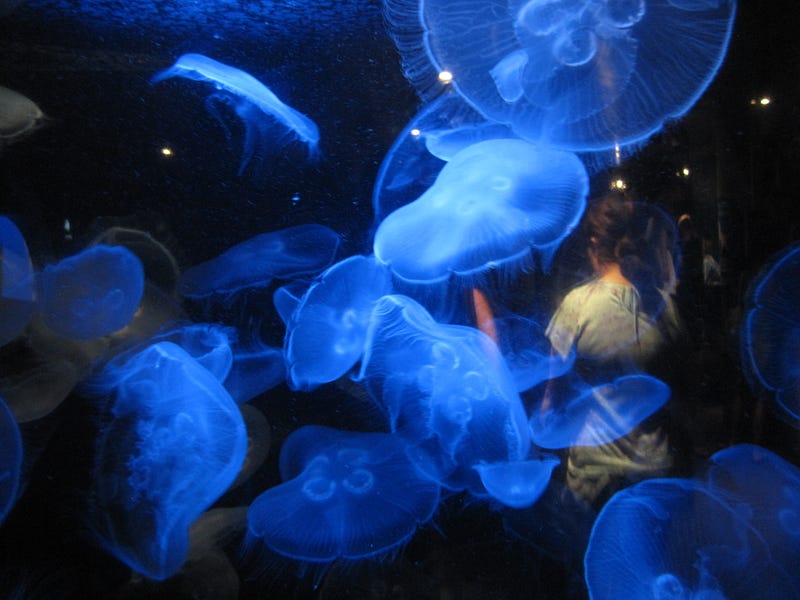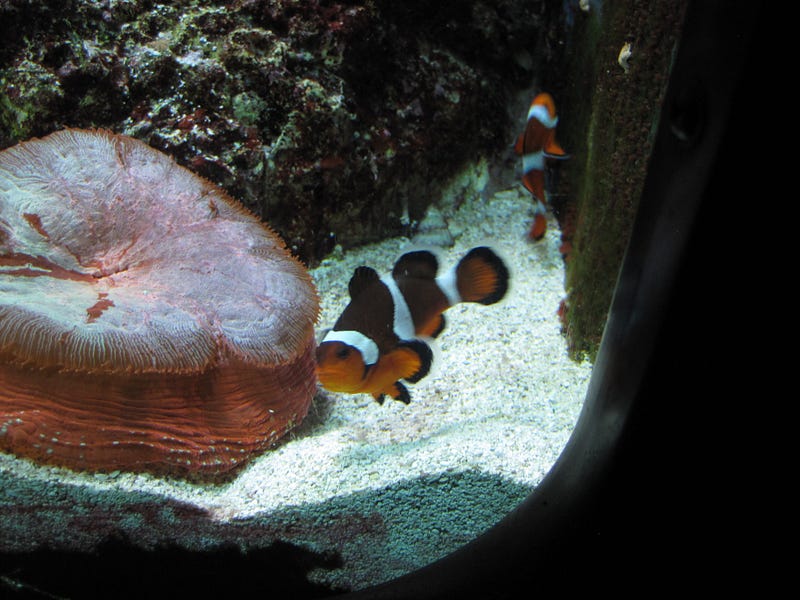
This is a sea anemone. Anemones belong to a group of organisms called cnidarians, fairly simply animals that lack a central nervous system. The group exhibits radial (or circular) body symmetry, while the majority of more ‘advanced’ modern species have bilateral symmetry (a single plane of symmetry with two mirrored sides). The most well known members of this group are the sea jellies or jellyfish.

While many cnidarians have life cycles that include a free-swimming medusa stage as well as a stationary polyp stage, the anemones and their close relatives the corals lack the medusa stage and remain in place or ‘sessile’ (though anemones do have the ability to move). Like jellies, anemone tentacles are filled with stinging cells, called cnidocytes, which inject venom using specialized structures called nematocysts. This venom includes neurotoxins that attack and disrupt the nervous system of whatever animal touches the tentacles, stunning it and allowing the anemone to move the prey to its mouth for digestion.
While the stinging cells also provide a potent defense, there are a number of animals that can bypass this. Crustaceans seem to be immune thanks to their hard shells, but there are also a number of fish species that are resistant and will eat the tentacles, such as butterflyfish. Because of this vulnerability, anemones often enter into symbiotic relationships with other organisms. One of the most well known (thanks in part I suspect to the Pixar movie Finding Nemo) is with the clownfish.

There are actually thirty different species of related anemonefish. I suspect that the one above is a common clownfish, Amphiprion ocellaris. Many of these fish have specific species or genera of anemone with which they have partnered. This is a classic case of mutualism, as the benefit to both organisms involved is fairly clear (though remember that these relationships form for evolutionary reasons and not through conscious choice, without a central nervous system an anemone is not even capable of consciousness).
The clownfish gets an excellent defensive area in which to live (as well as the occasional leftovers from an anemone meal) and the anemone gets protection from predators. If that were all that the species provide for each other it would still be a beneficial arrangement, but there is some evidence that it only scratches the surface of their relationship. For example, excretion from the clownfish is high in nitrogen (most fish release their waste in the form of ammonia), which can enhance the symbiosis of the anemone with an algae similar to the symbiosis between algae and fungi in lichen. Furthermore, the movement of the clownfish causes more water to flow around the anemone’s tentacles, benefiting the metabolism of both.
As I hope you can see, symbiotic relationships are often quite complex and multifaceted. Part of this is because of the species specialization I mentioned above. If certain species of fish partner with specific types of anemone and only those types, then the potential for coevolution increases. This means that the organisms are not just living together, they are evolving together and the relationship itself is shaped by evolutionary pressures.
I’ll talk about this more in the final third of the season when we discuss parasitism, but for next week we’ll explore our first example of human symbiosis this season. Until then, let me know if there are any examples you would particularly like me to touch on and I’ll try to fit them in.